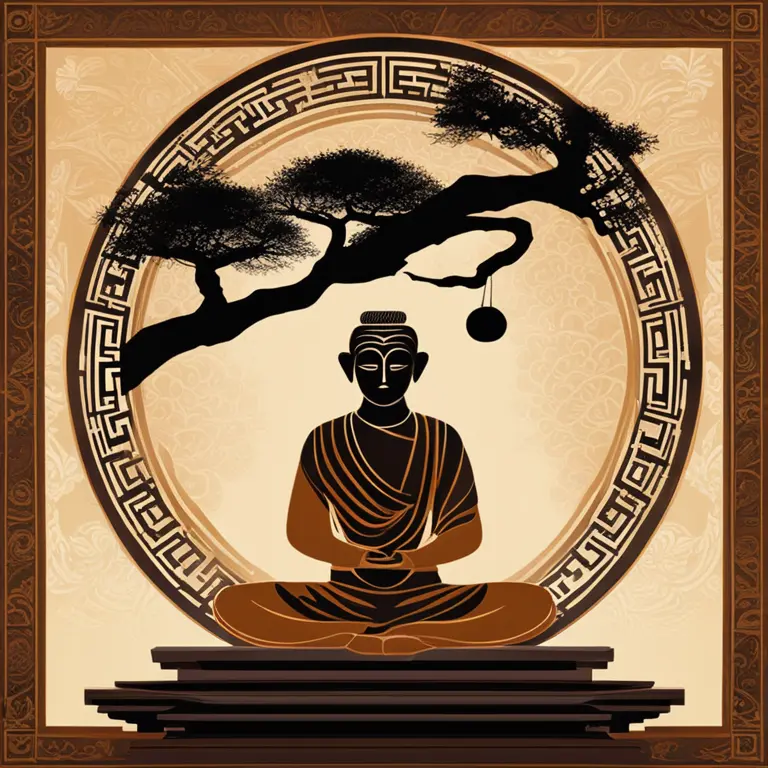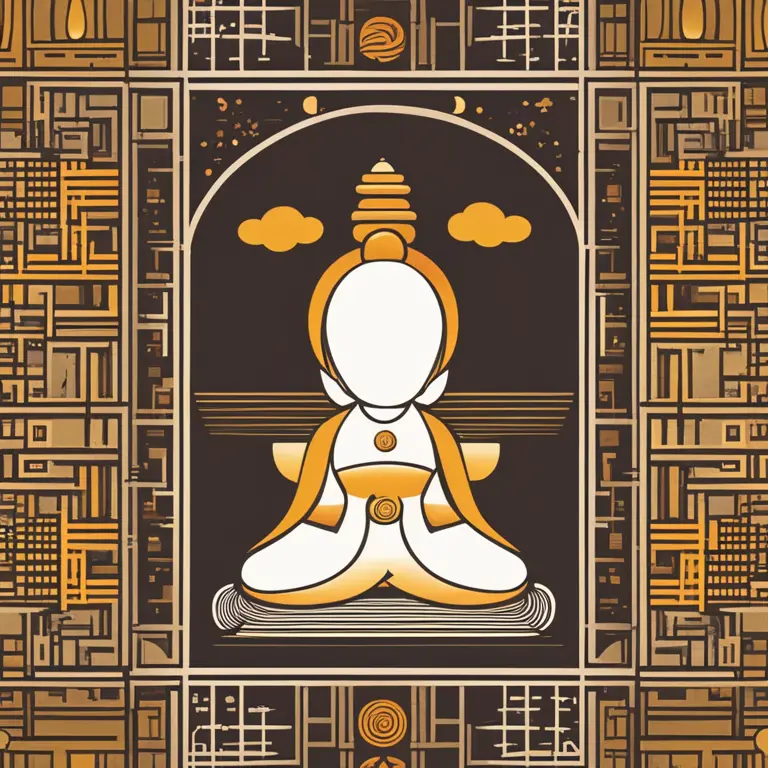
The Beginning of Meditation Practice
Delve into the ancient roots and evolution of meditation, tracing its early developers and enduring significance.
article by Hina Kurosawa
The Dawn of Meditation
Meditation is a practice steeped in antiquity, with its commencement lost in the early mists of civilization. It is believed to have originated several thousand years ago, with some of the earliest records coming from the wisdom traditions of India. The Vedas, ancient Hindu scriptures written in Sanskrit, refer to meditation techniques dating back to as early as 1500 BCE. These practices were primarily intended to deepen understanding of the sacred and mystical forces of life. In these early stages, meditation served as a crucial component of religious rituals and often involved deep contemplation, chanting, and breath control.

Expansion Across Cultures
While meditation began its journey in the Indian subcontinent, the practice was not confined to a single region or belief system. By 500 BCE, variations of meditation had taken shape in Taoist China and Buddhist India. Siddhartha Gautama, known as the Buddha, was a central figure in the popularization of meditation. After attaining enlightenment through rigorous meditation practices, he taught the path of mindfulness and right concentration. Meanwhile, in China, Laozi and Zhuangzi spread teachings that featured meditative stillness as a way of harmonizing with the Tao.

The Influence of Religious Texts
Key religious texts have played pivotal roles in both preserving and shaping the meditation practices we know today. Buddhist scriptures such as the Pāli Canon and the Mahayana Sutras elaborated on various meditation techniques, including mindfulness and loving-kindness meditation (Metta). The Hindu Bhagavad Gita, written around 400 BCE, discusses the importance of meditation for spiritual growth and inner peace. These texts provided frameworks that would support meditation's spread around the world and assist countless individuals in their spiritual and self-improvement journeys.

Meditation in the Western World
In the 20th century, meditation underwent a significant transformation as it entered the Western world. The Beatles’ trip to India in the 1960s, for instance, brought Transcendental Meditation to global attention. Pioneers like Maharishi Mahesh Yogi and later Jon Kabat-Zinn, who developed Mindfulness-Based Stress Reduction (MBSR) in the late 1970s, were vital in adjusting the ancient practice to fit the modern lifestyle. Kabat-Zinn's secular approach enabled meditation to transcend religious boundaries, facilitating its integration into various aspects of Western society, including healthcare, education, and the workplace.
Modern Adaptations and Research
Today, the burgeoning field of contemplative neuroscience is informing meditation practices, tailoring them to 21st-century needs. Groundbreaking studies have used fMRI and EEG to study the changes in brain activity associated with different forms of meditation. These findings have led to the development of evidence-based techniques designed to alleviate anxiety, depression, and stress. Furthermore, meditation apps and online programs are making the practice more accessible than ever, allowing users to engage in guided sessions from the comfort of their homes.
Continuous Evolution of Meditation
As we move further into the 2020s, it becomes increasingly clear that meditation will continue to develop and diversify. While its history goes back thousands of years, the essence of meditation has remained constant: the cultivation of mental concentration, emotional balance, and heightened awareness. Each era's practitioners bring forth new understandings and applications that keep meditation relevant and beneficial. Therefore, while we can trace its beginnings to ancient civilizations, meditation is truly a living practice, continuously shaped by those who carry its legacy forward.
Published: 1/14/2024
Modified: 1/15/2024
More predictions
Come back here soon to learn more about yourself and your future


Calming the Storm: Mindfulness Meditation for Anger
Discover how mindfulness meditation can be a powerful tool for anger management, promoting inner peace and emotional balance.


Harmonizing Life with Meditation Mantras
Delve into the transformative power of meditation mantras to align mind, body, and spirit for a harmonious existence.


Mindfulness Meditation Basics for First Graders
Introducing foundational mindfulness meditation practices to instill calm and focus in first-grade students.